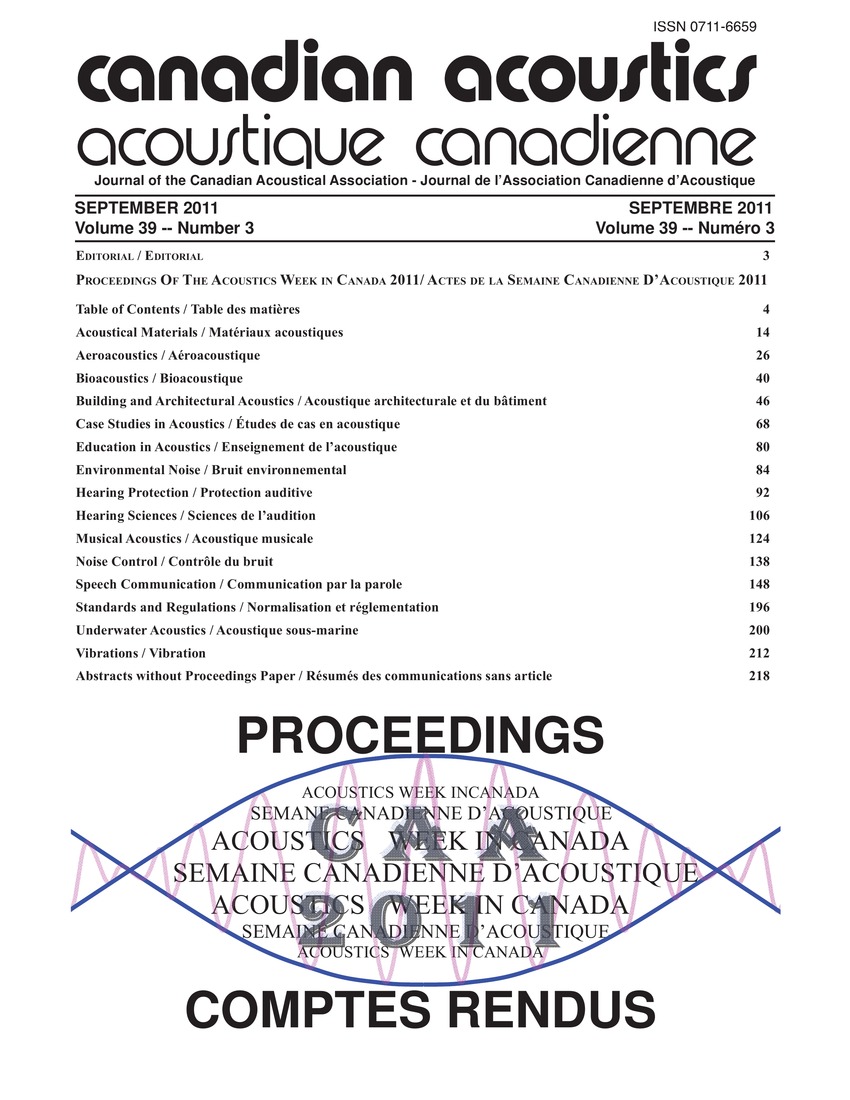Acoustic model for shoddy-based fibre absorbers
Keywords:
Porous materials, Acoustic behavior, Acoustic model, Bulk density, Characteristic length, Fiber types, General expression, Labor intensive, Model exchange, Polymeric foams, Predictive models, Test samplesAbstract
The acoustic behavior of shoddies is not well understood when compared to more ubiquitous porous materials such as fiberglass and certain polymeric foams. Designers must therefore rely on predictive models that are either highly complex or simpler models developed for different materials. The effect can be mitigated by using a larger test sample, however, these tests are more expensive and labor intensive. The second pronounced effect is a microscopic one. Raw shoddy contains a haphazard mix of different fiber types and sizes and characterizing the microstructure for use in predictive models is difficult. The model exchanges a minor loss in precision for this simplification. Charts of the characteristic lengths and static thermal permeability have been omitted for brevity. The behavior of the characteristic lengths is such that individual expressions relating the characteristic lengths to bulk density for each material type are chosen in favor of general expressions.Additional Files
Published
How to Cite
Issue
Section
License
Author Licensing Addendum
This Licensing Addendum ("Addendum") is entered into between the undersigned Author(s) and Canadian Acoustics journal published by the Canadian Acoustical Association (hereinafter referred to as the "Publisher"). The Author(s) and the Publisher agree as follows:
-
Retained Rights: The Author(s) retain(s) the following rights:
- The right to reproduce, distribute, and publicly display the Work on the Author's personal website or the website of the Author's institution.
- The right to use the Work in the Author's teaching activities and presentations.
- The right to include the Work in a compilation for the Author's personal use, not for sale.
-
Grant of License: The Author(s) grant(s) to the Publisher a worldwide exclusive license to publish, reproduce, distribute, and display the Work in Canadian Acoustics and any other formats and media deemed appropriate by the Publisher.
-
Attribution: The Publisher agrees to include proper attribution to the Author(s) in all publications and reproductions of the Work.
-
No Conflict: This Addendum is intended to be in harmony with, and not in conflict with, the terms and conditions of the original agreement entered into between the Author(s) and the Publisher.
-
Copyright Clause: Copyright on articles is held by the Author(s). The corresponding Author has the right to grant on behalf of all Authors and does grant on behalf of all Authors, a worldwide exclusive license to the Publisher and its licensees in perpetuity, in all forms, formats, and media (whether known now or created in the future), including but not limited to the rights to publish, reproduce, distribute, display, store, translate, create adaptations, reprints, include within collections, and create summaries, extracts, and/or abstracts of the Contribution.


